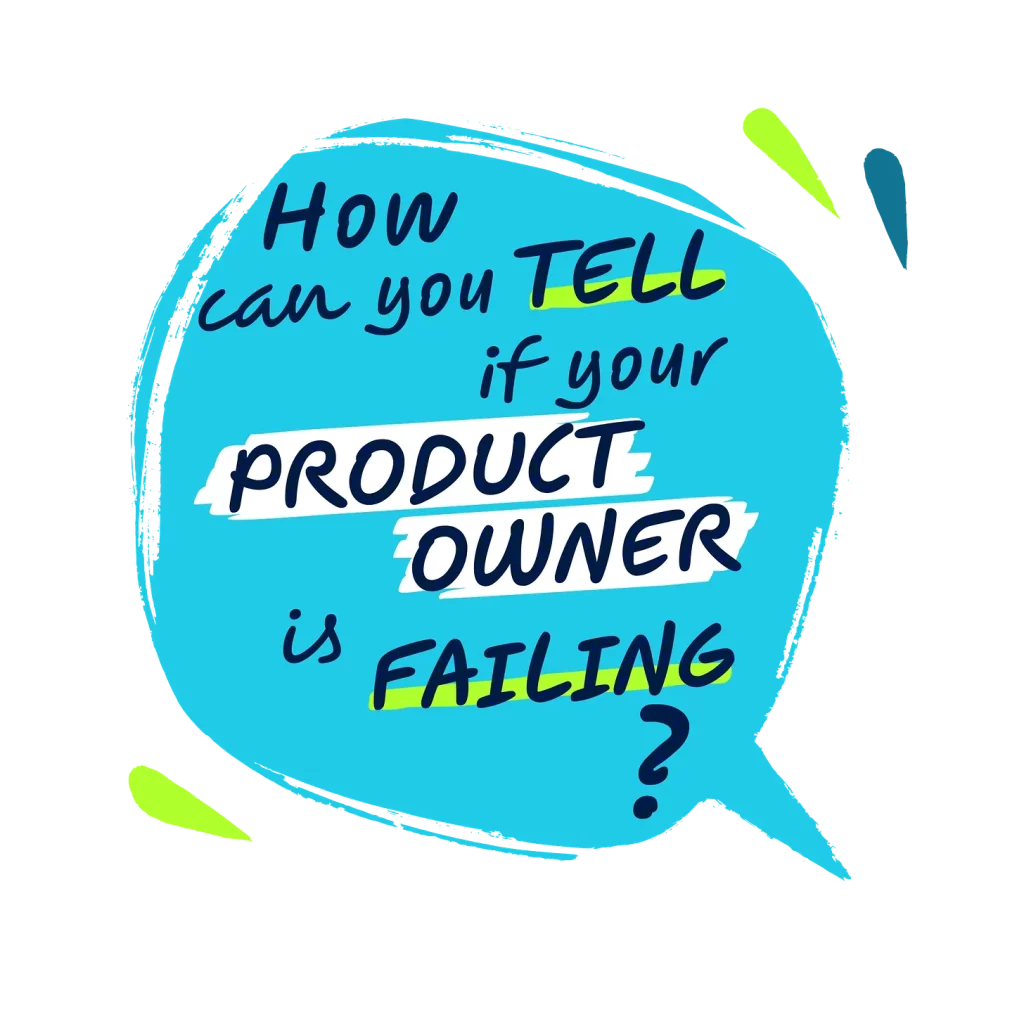The Product Owner is accountable for maximising the value by communicating the vision, product goals, and creating the right level of transparency of the product backlog to satisfy customer needs.
Understanding a Product Owner’s effectiveness is crucial for any initiative’s success. The accountability demands a blend of leadership, vision, and collaboration.
When a Product Owner is not working with the team to move towards the goal and business objectives, the symptoms are often visible across the team and the product’s progression. Identifying these signs early can prevent potential setbacks and ensure the product remains on a path to success.
1. Lack of Clear Vision:
A Product Owner should provide a clear, strategic vision for the product that guides the team. Suppose the team seems confused about the product’s direction or the goals shift frequently without clear reasoning. In that case, it may indicate the Product Owner’s failure to articulate a coherent and stable vision.
2. Poor Stakeholder Engagement:
Effective Product Owners actively engage with stakeholders to gather insights, feedback, and priorities. If stakeholders express frustration over not being heard or if there’s a noticeable disconnect between the product development and stakeholder expectations, it could suggest the Product Owner is not effectively bridging this crucial gap.
3. Team Morale Issues:
The team’s motivation levels can reflect the Product Owner’s leadership. A consistent drop in morale, increasing frustration, or a lack of enthusiasm within the team could indicate the Product Owner’s inability to inspire, lead through vision, and support the team effectively.
4. Inadequate Product Backlog Ordering:
One of the critical accountabilities of a Product Owner is ordering the product backlog so that its work items will maximise value delivery. If the team is often working on low-impact work items or if there’s frequent re-prioritization causing chaos, it indicates a failure in making informed, strategic decisions about the work’s potential value.
5. Feedback Loops and Adaptability:
A successful Product Owner fosters an environment where feedback is sought and acted upon. Suppose there’s little to no emphasis on gathering user feedback, or the product is evolving in a vacuum without adapting to user needs. In that case, it suggests a lack of commitment to iterative improvement.
6. Misaligned Product and Market Needs:
The ultimate measure of a product’s success is its market fit and user satisfaction. Suppose the product consistently fails to meet user needs or has a significant gap between the product offerings and market demands. In that case, it can be attributed to the Product Owner’s failure to align the product with real-world needs.
When these elements are perceivable, it’s often a sign of deeper issues that need addressing. It’s essential to foster open communication, encourage continuous learning, and focus on value delivery to overcome these challenges and steer the product toward success.


